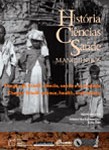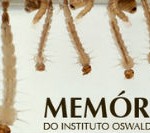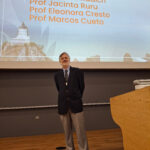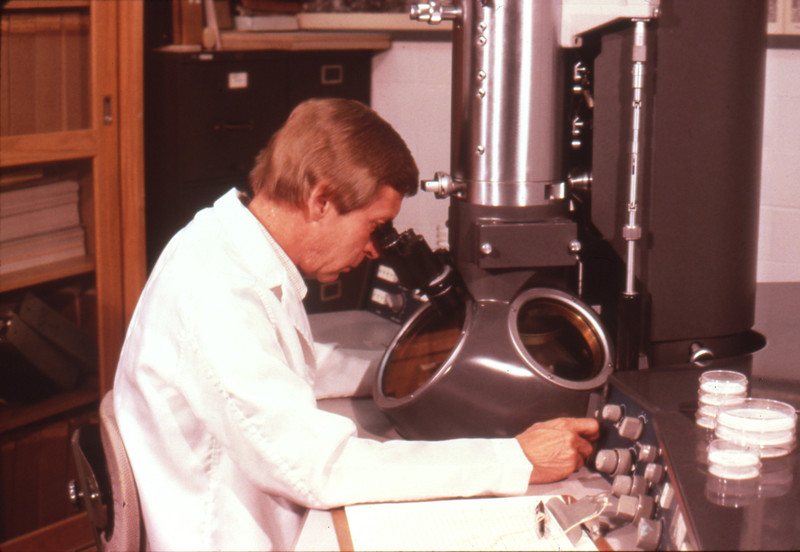Feb 2022
Vivian Mannheimer | HCS-Manguinhos

Jahnavi Phalkey was appointed Founding Director of Science Gallery Bengaluru in November 2018. Previously she held a tenured faculty position at King’s College London. She started her academic career at the University of Heidelberg, following which she was based at Georgia Tech-Lorraine, France, and Imperial College London.
During the past few years, Jahnavi Phalkey, a prominent historian of science from India, has brought a fresh perspective to a series of topics such as the relationship between Science and Empire, the crucial role played by historians of science in science education, and the challenges of transnational histories of sciences.
Presently, she is a Senior Associate at the International Centre for Theoretical Sciences (TIFR) in Bangalore and a Visiting Senior Lecturer in History of Science & Technology at King’s College London. Her publications include the book Atomic State: Big Science in Twentieth Century India (New Delhi: Permanent Black Press, 2013) that traces the emergence of atomic research and policy from British imperial rule to independence in 1949 and to the hegemony of US imperialism during the final decades of the 20th century.
Phalkey is also the Founding Director of Science Gallery Bengaluru (SGB); a public institution for research based engagement that is part of a university-linked global network. In Bengaluru, Jahnavi and her team are extending the model with a mandate to “bring science back into culture”.
In July 2021, she was elected member of the governing council of the Division of History of Science and Technology which is part of the International Union for History and Philosophy of Science (DHST/IUHPS). This interview with her would be of interest to historians of science beyond India.
The outstanding Science Gallery Bengaluru suggests that science and society do not always have had a fluent relationship and there is a need for better public engagement with science. Could you expand on these ideas? Why is this important for developing countries especially after the outbreak of the pandemic of COVID-19?
Scholarly communities and public institutions like Science Gallery Bengaluru, across the globe, have the responsibility to provide critical commentary on science and its practices, explore science in culture, and help place science in context. It is our mandate to provide insights into processes of knowledge production in the journey towards democratic knowledge-based societies, especially in the global south.
There is a gaping distance between research and the public in the developing world. Eduardo Galeano, the Uruguayan journalist once said that ‘la diosa tecnología no habla español’ [the goddess of technology does not speak Spanish] can perhaps be extended to say the same about science – ‘la diosa sciencía no habla español’.
In India and in Latin America, science and technology are seen to belong elsewhere and a harbinger of modernity, but equally of violence – epistemic and political.[1] As a result, we have a strong professional conversation around science and engineering in India, but we most certainly do not have a vibrant cultural conversation around it. In the public domain, can talk about grades, institutional rankings, the job market, upward social mobility but we cannot easily imagine a dinner table conversation about the place and space of science in everyday life.
The pandemic has strongly brought the message home that we all have to take critical decisions in our life which call for an understanding of why, when, and how may we trust scientific findings and truth claims. This demand on our cognition will only intensify in the future. Institutions like Science Gallery Bengaluru must contribute to making that conversation possible and draw in other institutions from across the globe – including from Latin America – to strengthen that mandate.
https://youtu.be/oQS6rNSEFEg
The special issue you coedited for the British Journal for the History of Science entitled “Science of Giants: China and India in the Twentieth Century,” is a remarkable effort to examine South-South comparisons and connections. What are the main challenges for these comparisons?
I was privileged to work for close to five years with colleagues working on China and India towards what eventually became the British Journal for the History of Science – Themes inaugural volume. We were also lucky to have funding: for the first workshop, with Grace Shen from the Canadian Social Science Research Council and York University, and later for four years from the Berlin-based Indian-European Advanced Research Network led by Sunil Khilnani. Robust South-South comparisons call for collaboration, and collaboration requires opportunity, funding, and time for a conversation to develop.
Our profession does not prioritize comparison at this moment and, in many ways, South-South comparisons are of less interest to Euro-American historiography. It is not seen to illuminate European or American past unless, of course, we were to compare imperial histories or trace continuing colonialisms. One direct consequence of this is the availability of funding.
Sources are also a major challenge. Archives in the global south, when present, are under-resourced; collections policies, when they exist, are either vague or sporadically followed upon, and finally, access is erratic dependent at times on political circumstances but equally, and this was my surprise, on personal connections or lack thereof.
Language is a constraint when archives and the prevalent language for scholarship are different. Take the case of Latin America where Spanish and Portuguese are the language of the archive and also for publishing. It means a scholar from India is less likely to read it out of intellectual interest unless it is available in translation – translation into English – which mediates if not interprets the historiographical landscape into terms more widely accepted. This mediation will establish the context of comparison, if taken up, rather than through direct reading of each-other’s work. For the China-India project, we got around this by working as a group such that we were all rooted in our archives but did not necessarily read or have access to each other’s archives.
Finally, flights! Our political economy is arranged such that even our flights are routed through Europe and America, and are very expensive. From India, it is less expensive to travel to the United States than it is to travel to Mexico!
At the end of the project, I think we reached a place from where a deeper and more robust conversation could begin. But by then it we ran out of funding, people’s career trajectories had diverged, and some moved on to different projects. I would like to pick up the project again, if time permits, with a smaller group drawing on the same cohort to further explore historiography and history of the two countries during the long twentieth century.
As the current chair of the Science and Empire Commission of the Division for the History of Science and Technology can you please tell us more about the future plans of the Commission?
I served as an elected President of the Science and Empires Commission (SCIEMP) for two terms (2013-2017, and 2017-2021) and stepped down to join the DHST Council at the Prague meeting (2021). Especially since the meeting in Rio (2017), I have worked very closely with my colleague Thomas Haddad who has now taken over the reins as President.
My association with SCIEMP began in Beijing (2005) when I was recruited by Mike Osborne. Mike and Catharine Jami have been the commission’s strongest enablers since its inception. Even when they stepped away from the commission to take on more responsibility for the IUPHST, they have always attended our symposia, provided guidance in the years between, and encouraged younger scholars to take on a more active role in the commission.
In my eight years with SCIEMP, together with my colleagues, both Vice Presidents of the commission, Thomas Haddad and John Mathew, my goal was to bring together young scholars and new entrants to the field from across the globe. We wanted to encourage, especially, attention to changing historiography to provide SCIEMP as a platform as a space of convergence. With the increasing prominence of global history, it has become imperative that we map the changing terrain and historiographical cousins to study science and empire like “locality,” “circulation,” “connections,” “global,” and so on. We were able to travel some distance but most certainly did not get as far as we would have liked to in bringing together a special issue of a journal with historiographical essays. I am committed to contributing to any effort that Thomas Haddad will now lead towards bringing this goal to fruition.
[1] Galeano, Eduardo. Open Veins of Latin America: Five centuries of depillage of a continent. Edition 25th Anniversary (1973, 1997) Monthly Review Press, New York. Originally published as Las venas abiertas de América Latina, Siglo XXI ,1971. p.244.









No comments
Trackbacks/Pingbacks